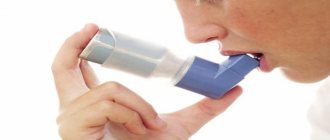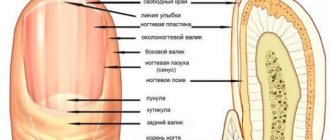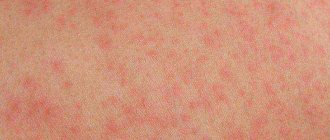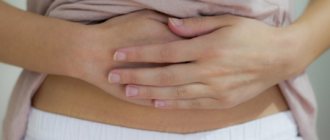Low stomach acidity: symptoms, treatment, diet, folk remedies | Good to know | Healthage.ru
Era of health
- Become an author
- For advertisers
Home » Useful to know » Low stomach acidity: symptoms, treatment, diet, folk remedies
Low stomach acidity: symptoms and treatment with folk remedies
A decrease in the normal level of gastric acidity indicates a disease. This could be gastritis, duodenitis, peptic ulcer.
In any case, the symptoms of this disorder should be the basis for contacting a gastroenterologist.
The specialist will tell the patient about the symptoms and treatment of low stomach acidity with folk remedies and medications.
Clinical picture
The main function of gastric juice is the breakdown and digestion of food. This liquid has a complex composition, and its main ingredient is hydrochloric acid. It is responsible for maintaining the correct acidity level.
When this indicator decreases, we are talking about the following pathologies:
- anacid gastritis - in this case, hydrochloric acid is almost not produced;
- hypoacid gastritis - in this case, the synthesis of hydrochloric acid and gastric juice decreases;
- gastroduodenitis;
- stomach cancer.
With such problems, the functioning of the glands that produce hydrochloric acid occurs. In particularly difficult cases, their complete atrophy is observed.
At the same time, many people are interested in how to find out whether the acidity of the stomach is increased or decreased.
So, signs of low stomach acid include the following:
- unpleasant putrid odor from the mouth;
- the appearance of belching with the smell of rotten eggs;
- intestinal problems accompanied by constipation or diarrhea;
- metallic taste in the mouth;
- heartburn;
- discomfort in the intestines;
- increased gas formation, leading to abdominal bloating;
- loss of appetite.
When acidity decreases, problems arise with the digestion of protein foods. As a result, fermentation, flatulence, and pain are observed. In addition, toxins accumulate and difficulties arise with the absorption of vitamins and minerals.
Weakened immunity and impaired motility of the digestive organs are often observed. This violation leads to the development of fungal pathologies and the proliferation of parasites. Often there is a decrease in pancreatic secretion and intestinal dysbiosis develops.
If such manifestations occur, you should immediately consult a doctor.
Introduction
It is necessary to consult a doctor in a timely manner and take measures to eliminate this disease.
Causes of high stomach acidity
There are reasons that depend on the person and others that don’t.
- Eating food that is either very cold or very cold. Sour or spicy foods also irritate the gastric mucosa.
- Incorrect diagnosis. If a person independently makes a diagnosis and prescribes medications. You cannot rely on the knowledge of friends and acquaintances.
- Work with increased harmfulness.
- Genetic predisposition.
- The presence of parasites in the human body.
- Problems with metabolic processes within the body.
- If a person has had infectious diseases in the body.
Basic principles of treatment
To cope with a decrease in acidity, it is very important to adhere to all the gastroenterologist’s prescriptions. Typically, treatment is aimed at solving the following problems:
- restoration of impaired enzyme synthesis in the stomach;
- normalization of the functioning of all elements of the digestive system;
- elimination of bacterial microorganisms.
Most often, the occurrence of symptoms of decreased acidity requires the use of a number of medications:
- Enveloping drugs – provide reliable protection of the mucous membrane. This category includes products such as Almagel, Gastrofarm.
- Antibacterial agents help eliminate the cause of the disease.
- Stimulating substances – provide an increase in the synthesis of hydrochloric acid. Pentagastrin and Cytochrome are often used for this purpose.
- Substitute drugs are prescribed in the absence of positive dynamics after the use of stimulants. For this purpose, Panzinorm and Pepsin are used.
- Restorative agents - eliminate spasms of intestinal smooth muscles and normalize intestinal motility.
- Vitamin preparations – strengthen the immune system and prevent the development of hypovitaminosis.
If low acidity is the result of infectious gastritis, a bacterial eradication method is used. It implies a complex influence on the source of pathology.
For this purpose, the following categories of drugs are prescribed:
- antibiotics – Clarithromycin, Amoxicillin;
- proton pump inhibitors – Rabeprazole, Omeprazole;
- bismuth subcitat – De nol.
The common question of whether it is possible to take Omeprazole with low stomach acidity should be answered in the affirmative. However, this is only relevant if the disease is infectious.
Effective folk remedies
To cope with pathology, you can use effective folk remedies. To do this, use the following:
- Honey and butter. These products help normalize acidity. To solve this problem, you should mix honey and butter in equal parts and use a large spoon. This should be done half an hour before meals 3 times a day.
- Cowberry. The berries need to be filled with boiled water. Take a quarter cup of the tincture during the winter. This should be done half an hour before meals. From April you can eat 1 small spoonful of berries. It's best to do this at night.
- Walnut. This product perfectly helps to increase acidity levels. To prepare an effective product, 15 fruits need to be crushed and mixed with 2 glasses of vodka. Infuse in a glass container for 15 days.
- Large burdock root. Take 1 small spoon of raw material, pour 0.5 liters of boiling water and leave overnight. Use the strained product half an hour before meals. It is recommended to drink this amount in 1 day.
- Gooseberry. This product should be taken when pain occurs. It can also act as an effective laxative. Pour 250 ml of boiling water over 1 large spoon of berries and cook for 15 minutes. Take a third of a glass 3 times a day.
- Lingonberry leaves. Take 1 large spoon of raw material, mix with a glass of water and cook for 1 minute. Leave for half an hour. Take 2 tablespoons before meals. This should be done 3 times a day.
- Medicinal marshmallow. A couple of tablespoons of the root of this plant should be mixed with 500 ml of boiling water and left in a thermos for 12 hours. Consume 40 minutes before meals. The total daily amount is divided by 3 times.
- Seed oat grains. Take 20 g of raw material, wash thoroughly and mix with a glass of boiling water. Leave to infuse for 2 hours. Take 15 minutes before meals. You need to drink at least 2 glasses per day.
- Cabbage juice. To prepare it, just mince fresh leaves. This product should be consumed warm in half a glass. This should be done 2-3 times half an hour before meals. The quantity needs to be increased little by little. The course of therapy is 3-4 weeks. The juice can be stored in the refrigerator for a maximum of 2 days.
- Plantain infusion. Mix a tablespoon of dried leaves with 250 ml of boiling water and leave for 10 minutes. Take the strained product one third of a glass three times a day. It is recommended to drink the composition in small sips. The product should be warm.
- A decoction of yarrow herb. Take 20 g of raw material, add 2 glasses of water and cook for a quarter of an hour. Leave for 45 minutes and strain. Take 1 large spoon three times a day. This should be done before meals - about a quarter of an hour.
- Collection of herbs. To prepare the product, you need to take 4 parts each of knotweed and St. John's wort, 3 parts of blueberry leaves, 2 parts each of immortelle and yarrow flowers, as well as centaury herb. In addition, you will need chamomile and peppermint - 1 part each. Take 4 tablespoons of the mixture, add 1 liter of cool water and put it on the stove in the morning. Bring the mixture to a boil and cook for 5 minutes. Place in a warm place for 20 minutes and strain. Take a glass up to 5 times a day. This should be done half an hour before meals.
Nutritional Features
A diet for low stomach acidity involves consuming fresh cucumbers, cabbage, apricots, and beans.
Before meals, you can drink 50 ml of fresh carrot juice. After meals, it is recommended to drink blackcurrant juice. It is very important to eat 5-6 times a day in small portions.
What can’t you eat with this diagnosis? You should exclude foods that provoke fermentation in the stomach. These include the following:
- yeast bread;
- whole milk;
- fresh bakery;
- grape;
- sour cream;
- cream.
If you have any type of gastritis, you will have to avoid eating hot or cold foods. Also, avoid eating hot spices or fried foods.
Nutrition for low stomach acidity is based on the following categories of products:
- lean boiled meat;
- chicken liver and beef tongue;
- oatmeal and buckwheat;
- pumpkin, potatoes, carrots.
Many people are interested in what to drink if they have low acidity. In this case, any drinks that stimulate the production of gastric juice are indicated - tea, coffee, vegetable or fruit juices. Mineral water is also very useful for this diagnosis.
Is it possible to drink soda with such a diagnosis, the doctor should tell you. In most cases, it helps to normalize the condition, but sometimes it can cause harm.
A decrease in stomach acidity may indicate the development of serious pathologies. Therefore, before starting treatment for this condition with folk remedies, you should definitely consult a doctor.
In some cases, home therapy can only worsen the patient's condition.
Useful video
Heartburn is an uncomfortable stomach disorder that causes a burning sensation in the chest or upper abdomen.
This phenomenon happens to a huge number of people every day.
It is largely preventable and can be treated by adjusting the diet and using traditional methods of treatment.
Many people simply do not know that there are folk remedies for heartburn with increased stomach acidity, which can effectively act and cure such a digestive problem.
Treatment with traditional methods must be previously agreed with the attending physician.
Clinical picture
It is important to determine the origin of the disease (its root cause, possible complications), the degree of development, the localization of pain in the abdominal area and the symptoms that appear in the patient. When diagnosing gastritis with low acidity, the doctor takes into account the presence of belching, which occurs due to increased flatulence.
The most common manifestation of low acidity is an unpleasant, rotten odor from the mouth (similar to the smell of a rotten egg). The above symptoms appear due to reduced levels of acidity, which is an antiseptic of the stomach. It has a bactericidal effect, protecting the organ from the penetration of pathological microorganisms. With a reduced level of acid in the gastric juice, the level of protection of the organ decreases. Bacteria penetrate the intestines of a person who is affected by gastritis, negatively affecting his microflora.
If gastritis occurs with low acidity, the symptoms of which are listed above, then you will need to consult a doctor. The main symptom of the disease is constipation. It occurs due to decreased peristalsis in the gastrointestinal tract. At this stage of the disease, treatment consists of a dietary and separate menu. Constipation medications do not help.
Experts consider increased flatulence (gas formation) in the abdominal area to be a common symptom of the pathology. This is due to the processes of fermentation and stagnation of micronutrients that are not digested or broken down by gastric juice with low acidity. Such processes are accompanied by strong, dull, cutting pain in the gastrointestinal tract.
Useful video
Nowadays, fast food products, pickled products or processed foods are in fashion, rather than foods that can reduce acidity levels. Due to this, the acidity level increases.
Additional symptoms appear, such as heartburn, belching, very frequent pain in the stomach at night and, as a result, gastritis occurs.
Modern people are increasingly asking the question, what foods reduce acidity?
Most people live with high acidity and sometimes take acid-reducing medications that can lower it.
But if you do nothing, you can acquire a number of serious diseases.
Symptoms of the disease
After incomplete absorption of protein food (its breakdown requires the highest concentration of gastric juice), the process of accumulation of protein decomposition products occurs. Toxins cause harm to the body, primarily to the abdominal organs and the immune system. Under the influence of toxic elements of protein breakdown, the body's protective function is significantly reduced. Due to a decrease in the human body’s resistance to the spread of various diseases, processes of exacerbation of chronic diseases begin, as well as the emergence of rapidly progressing ailments of a viral or infectious nature. The patient becomes most vulnerable to the development of fungal infections - damage to the mucous membranes, skin, and nails by mycoses. The development of oncological tumors is possible.
Against the background of toxic decomposition of protein foods, a violation of the absorption of vitamins occurs. Due to the lack of vital microelements in the blood and body, a response begins - dry, brittle hair that constantly falls out, very fragile and brittle, peeling nail plates, dry and rough skin of the hands and face. A common symptom of gastritis is anemia (anemia). It is an indirect sign of reduced acidity in the gastrointestinal tract. If anemia develops, Addison-Biermer disease may develop. If a person suffers from autoimmune gastritis, there is a deficiency of vitamin B12, which leads to the development of B12 deficiency anemia.
A common manifestation of low stomach acidity is the appearance of rashes and acne on the nose and cheeks. Possible dilation of blood vessels on the face. Undigested pieces of food are often observed in the stool of patients. This occurs due to insufficient concentration of acid in the gastric juice. Also, similar symptoms are caused by the inactivity of pepsin, a hormone for digesting protein foods. The abdominal area often feels tightness, heaviness and pain. This is all accompanied by heartburn and discomfort in the oral cavity. After eating, the pain intensifies, the gastrointestinal tract becomes distended.
Effective therapy
Treatment of gastritis at the initial stage consists of diagnosis and monitoring of the patient. In 40% of cases, inpatient drug treatment is carried out. A diet for low stomach acidity is aimed at correcting the secretory function of the organ. Treatment of gastritis with similar methods is aimed at activating the gland that is responsible for digestion. The menu is compiled together with a nutritionist. The diet for gastritis with low acidity is selected taking into account the following rules:
- proper chewing - it is important to chew each piece of food very thoroughly;
- eating should take at least 30 minutes;
- before meals you need to drink a glass of mineral water;
- the menu should be dominated by fruits and vegetables;
- meat consumption should be limited to periodic intake of beef, poultry, fish;
- everything should be steamed or oven-cooked;
- exclude fried and fatty foods from the menu;
- Fermented milk products are useful for treatment;
- A diet for gastritis with low acidity allows the consumption of juices, berry drinks and tea.
There are lists of permitted and prohibited foods that specialists use when preparing a patient’s diet. Allowed to eat:
- stale light-colored bread, crackers from the oven;
- soft pasta and cereals;
- dairy products;
- soft cheeses;
- chicken eggs (except fried foods);
- minced fish and meat - to avoid damage to pathological ulcers in the area of the stomach and intestinal mucosa;
- low-fat sausages, lean ham;
- boiled vegetables, grated on a medium grater;
- fruits after heat treatment, it is advisable to cut off the hard skin of the fruit;
- vegetable and butter;
- jellies and fruit purees;
- The only seasonings you can use are salt, cinnamon and lemon juice in small quantities.
Recommendations from nutritionists and gastroenterologists
It is recommended to treat atrophic gastritis with low acidity according to the following scheme:
- taking antibiotics (Metronidazole);
- taking proton pump inhibitors (Omeprazole, Ranitidine).
Objectives of pathogenetic treatment of atrophic gastritis:
- ease of digestion;
- reduction of inflammation (Plantaglucid);
- mucosal protection (Vicalin).
The diet for atrophic gastritis is more strict. Treatment must be prescribed taking into account all the features of the course of the disease, the duration of the chronic stage, the condition of the patient and the affected organ.
A properly selected menu slows down the progression of a chronic disease.
The diet for atrophic gastritis with low acidity is aimed at maximizing the reduction of damage to the gastrointestinal tract. Food should be as soft as possible - stewed, steamed to soften the rough veins and fibers in the meat. Every day you need to follow the basic rules of treatment:
- prohibit the consumption of cold and hot food;
- exclude spicy, salty, smoked, sour, fried, canned foods;
- do not drink coffee, carbonated drinks;
- You can only drink jelly, weak tea, mineral water and cocoa;
- ban chocolate, sweets, cookies.
It is recommended to eat steamed fish and meat. An important element of nutrition is vegetables and non-acidic dairy products. The use of soups and purees is recommended.
Symptoms of low stomach acid
If there is a low pH level in the stomach, a person begins to experience problems with digestion, and also does not absorb all the vitamins and elements from the foods that enter the body. All this leads to pathologies over time, and can also give impetus to the development of malignant tumors and severe allergies to certain foods. In the human body with low acidity, proteins cannot be absorbed and digested normally, due to which they begin to ferment, which leads to gas formation, food in the stomach begins to rot, and as a result, the immune system decreases.
People with low stomach acid experience characteristic symptoms that may indicate a decrease in levels:
- Abdominal bloating and a feeling of fullness appear.
- Appetite worsens.
- An unpleasant smell of rot begins to come out of the mouth.
- Stomach upset, possible diarrhea or constipation.
- Flatulence.
- Fermentation and churning in the stomach.
- Frequent heartburn.
- Stomach pain.
- After defecation, you may notice remnants of undigested food in the stool.
If the described symptoms appear, then at home it can be assumed that low acidity has appeared in the stomach. In addition, these may be symptoms of gastritis or gastroduodenitis. If you go for an examination to a doctor, then simply the person’s words and complaints will not be enough for him. It is important for doctors to diagnose the patient and establish a correct and accurate diagnosis, after which the correct treatment methods can be prescribed to reduce stomach acidity. In medical practice, there are a couple of research methods for low stomach acidity:
- The use of intubation, when two probes are passed through the mouth into the stomach, one thicker to determine the activity of the secretion, the second thin, which allows one to determine the level of acidity.
- Acidotest. This study allows you to determine the acidity of the stomach by the color of urine.
With low stomach acidity, the reasons can be very diverse, but the main reasons are as follows:
- Gastritis.
- Gastroduodenitis.
- Cancer.
It is the types of diseases described that are very closely related to low levels of acidity, since strong malfunctions of the glands that are responsible for the normal production of hydrochloric acid begin inside a person. In some cases, such glands simply stop working. Low stomach acidity is a serious pathological change that can be hazardous to health. With such a deviation there is a high risk of developing fungi, viruses and other infections.
Methods for determining acidity
The least accurate and indicative information in the hospital is provided by the probeless method, based on identifying different staining of urine using ion exchange resins. “Acidotest” has become more widespread in this line of products. The kit includes several tablets with:
- dye;
- ion exchange resins;
- stimulator of gastric juice secretion.
Resins are inert for the body and are not absorbed into the gastrointestinal tract, and, therefore, cannot appear in the urine, like the dye, which is in a strong complex with them. But the dye is easily replaced by hydrogen ions coming from hydrochloric acid. Depending on how many ions from the hydrochloric acid have displaced the dye, the urine will be colored differently. The kit comes with a color scale, which is used to judge a particular condition.
Probing of the stomach will tell you more accurately about the state of acidity: gastric contents are sucked out, the acidity of which is measured in the laboratory. This method is not physiological, since the mixing of liquids from different sections that have different acidity occurs. The result is an average figure with little reliability.
The process of probing the stomach
During gastroscopy, it is also possible to determine the acidity of the stomach by irrigating the mucous membrane through a flexible endoscope with a special acidity indicator. The method is visual and also not very accurate.
Intragastric pH testing is considered the gold standard and the most informative way to determine acidity. This method not only gives an accurate pH number, but also reflects a complete picture of the distribution of acid in the stomach in different parts of the gastrointestinal tract or even at different times of the day.
Norms of intragastric pH-metry.
Treatment of low stomach acidity
The first thing to remember when you have low acidity is proper nutrition, dietary adjustments to normalize the acidity level. In general, proper nutrition should be the main component, after which drug treatment is additionally included. Drugs are used that can improve the secretion of gastric juice and acids, and tablets are additionally prescribed that relieve pain syndromes. As a rule, the following normalizing drugs are used:
- Limontar.
- Prozerin.
- Cerucal.
- Etimizole.
If drugs that increase the level of stomach acidity do not produce results, then a replacement method of treatment is used. The patient will need to use acid inhibitors, as well as Pepsin or Panzinorm tablets. Treatment requires the use of antibiotics, since in the acute form of the pathology the development of the Helicobacter pylori bacterium is often found. Such a virus can lead to the development of gastritis or ulcers.
Sometimes the attending physician may recommend normalizing the acidity of the stomach with folk remedies, which do not have such a strong effect on the body, practically do not cause side effects, and are also considered an alternative method of treatment. The main goal of treatment is to restore and improve the performance of the stomach, increase secretion, and normalize metabolism. Everything described can be achieved if you not just treat with pills, but also use additional medications during treatment in the form of multivitamins, which contain a lot of folic acid.
Indications for pH testing
First of all, you should remember that you cannot “prescribe” this procedure to yourself. A gastroenterologist exclusively refers you for examination if he believes that problems in the digestive tract may be associated with acidity problems. There are also diseases for which this study is indicated. These are peptic ulcer disease, chronic gastritis and duodenitis, pancreatic adenoma, changes in the tissue of the epithelium of the esophageal mucosa, as well as GERD.
In addition, the doctor may prescribe pH testing in order to monitor the patient’s condition after gastrectomy, as well as to monitor the effect of drugs designed to reduce or increase the acidity of gastric juice.
Finally, this diagnostic method is indicated if doctors cannot accurately determine the etiology of the disease and they doubt which method of therapy to use.
Nutrition for low acidity
The most important thing before normalizing stomach acidity using folk or other means is to make the right diet, since without it the treatment will be ineffective. If the acidity level is low, it is recommended to remove dairy products, especially milk, from the diet. In general, the diet is similar to a diet for gastritis, so you need to remove all spicy foods, fried foods, pickled vegetables, fruits and other foods from your diet.
It is recommended to cook food by steaming, boiling or baking. In addition, while treatment is being carried out and there are symptoms of low acidity, it is necessary to grind or greatly grind the ingredients. You need to introduce more juices from natural products into your diet, namely:
- Cabbages.
- Raw potatoes.
- Carrots.
It is enough to drink a glass of juice a day so that enough acid is produced in the gastric juice. You can also include some types of pickles, for example, sauerkraut, but it should be in limited quantities. It is better to eat more cereals and sour vegetables and fruits. The use of juices from berries and fruits is allowed, but it is important to monitor the body’s reaction to such products, since not every stomach and intestines will react normally to such a change. In case of low acidity, it is very good to drink mineral waters that contain hydrochloric-alkaline substances. For example, Essentuki, you need to drink this mineral water immediately after eating.
Folk remedies for low acidity
Folk remedies for stomach acidity are often used to reduce the level of acid in the stomach, but you can use some of the remedies presented in the table that can increase stomach acidity:
| Ingredients used: | Recipe and description: |
| Calamus, dill, rose hips and Kuril tea in equal parts. | All ingredients need to be mixed so that you end up with 2 tbsp. The product is poured into a thermos and 500 ml of boiling water is poured in, after which the medicine is left overnight. You should take 70 ml of this tea 5 times a day 30 minutes after meals. To normalize acidity and increase it, you will need to undergo a course of treatment for up to 2 months. |
| Honey, vodka, aloe juice. | To prepare, you need to remove 1 glass of juice from aloe, add a glass of honey and vodka, then mix everything thoroughly and leave the mixture for a month. You will need to drink the medicine 1 tbsp. on an empty stomach to increase acidity. |
| Oregano, dandelion, yarrow. | You need to take the funds in equal parts so that you end up with 2 tbsp. The plants are placed in a thermos and filled with 2 tbsp. boiling water You will need to infuse the product all night, and drink it 5 times a day to normalize acidity. The dosage is 1/3 glass at a time, half an hour before a meal. Treatment of low acidity with this remedy should be carried out for up to 2 months. |
This is only a small part of traditional medicine that can normalize the acidity of the stomach and should be used only if the acidity decreases. In addition, you can use other herbal mixtures. It is recommended that before using any product, consult a doctor who will tell you how to normalize stomach acidity in a particular case.
Increased acidity
Most often, an increase in pH in the stomach accompanies the development of so-called acid-dependent diseases. These include hyperacid duodenitis and gastritis, peptic ulcers of the duodenum and stomach, as well as GERD (gastroesophageal reflux disease).
Symptom complex characteristic of this condition:
- pain that occurs after eating (1-2 hours later);
- sour belching;
- burning and heaviness in the abdomen (heartburn);
- nausea (in rare cases, vomiting);
- tendency to constipation.











